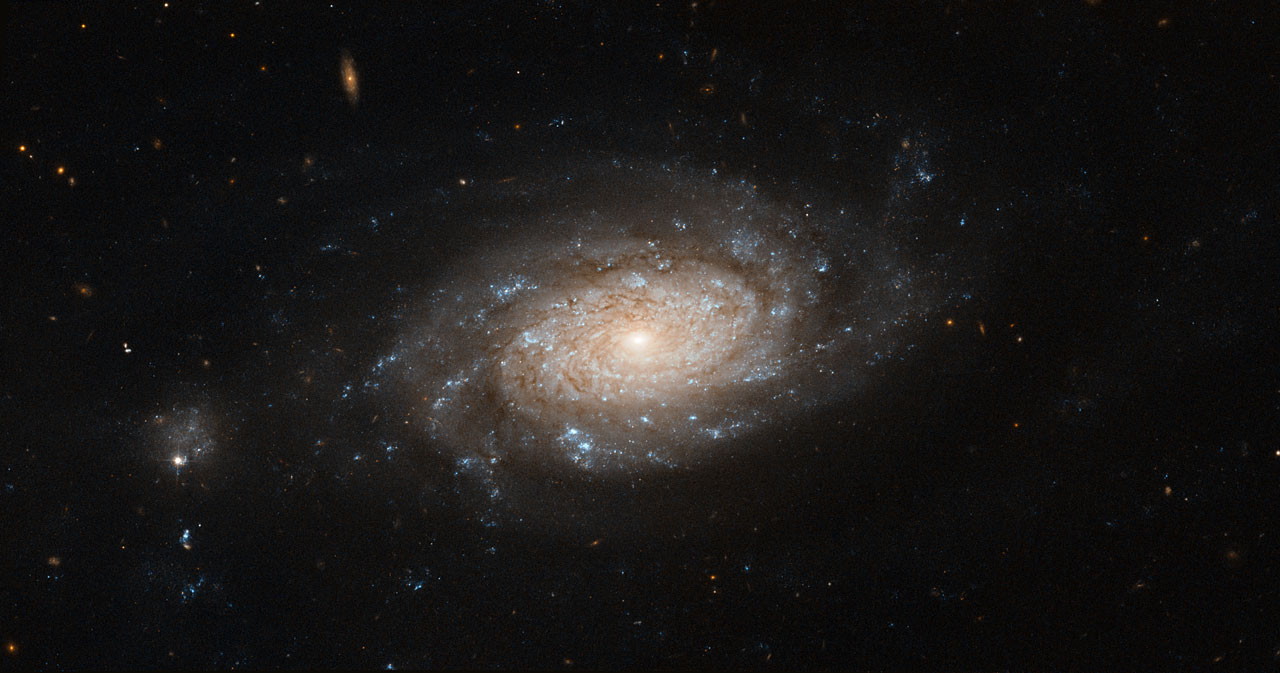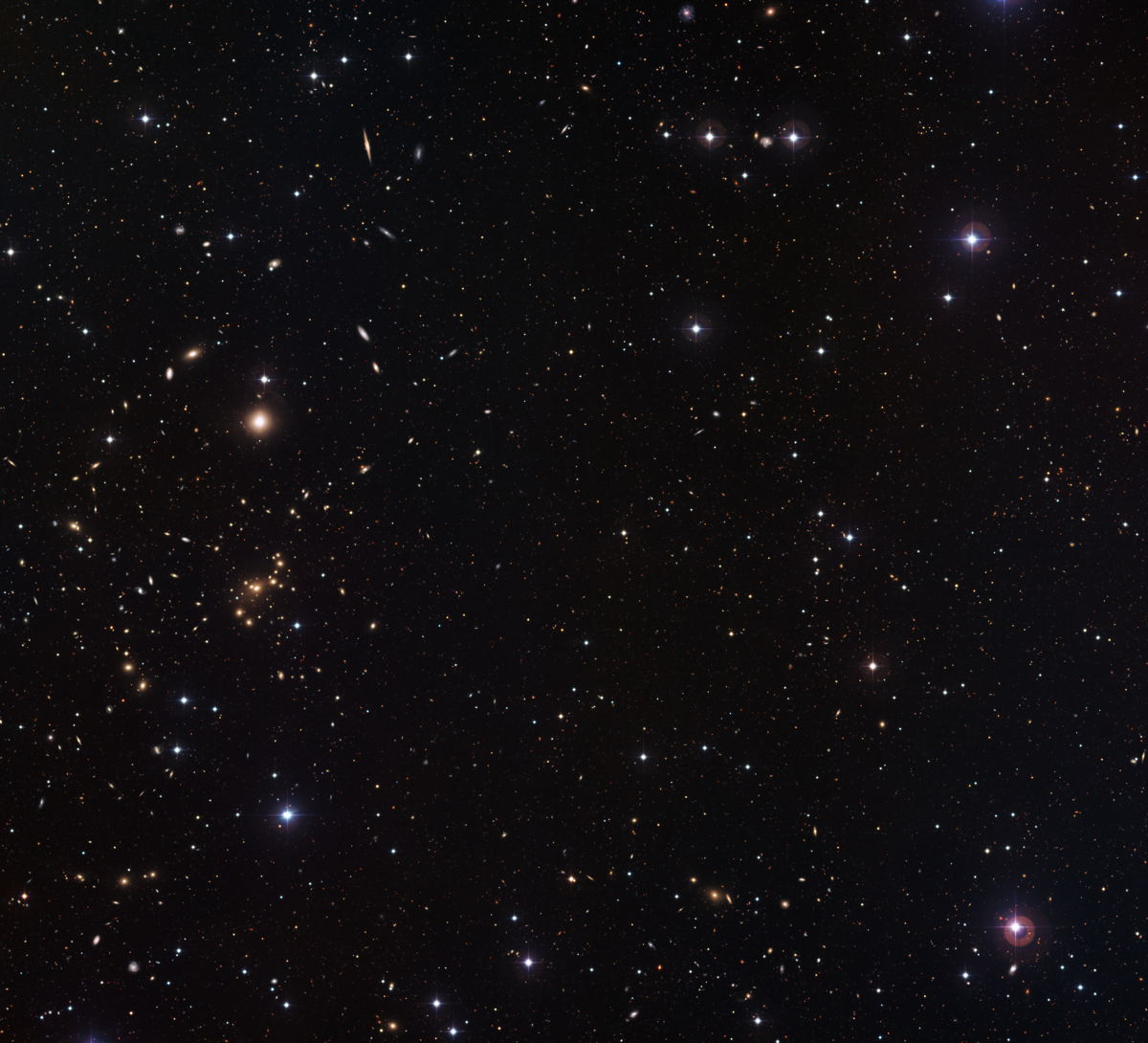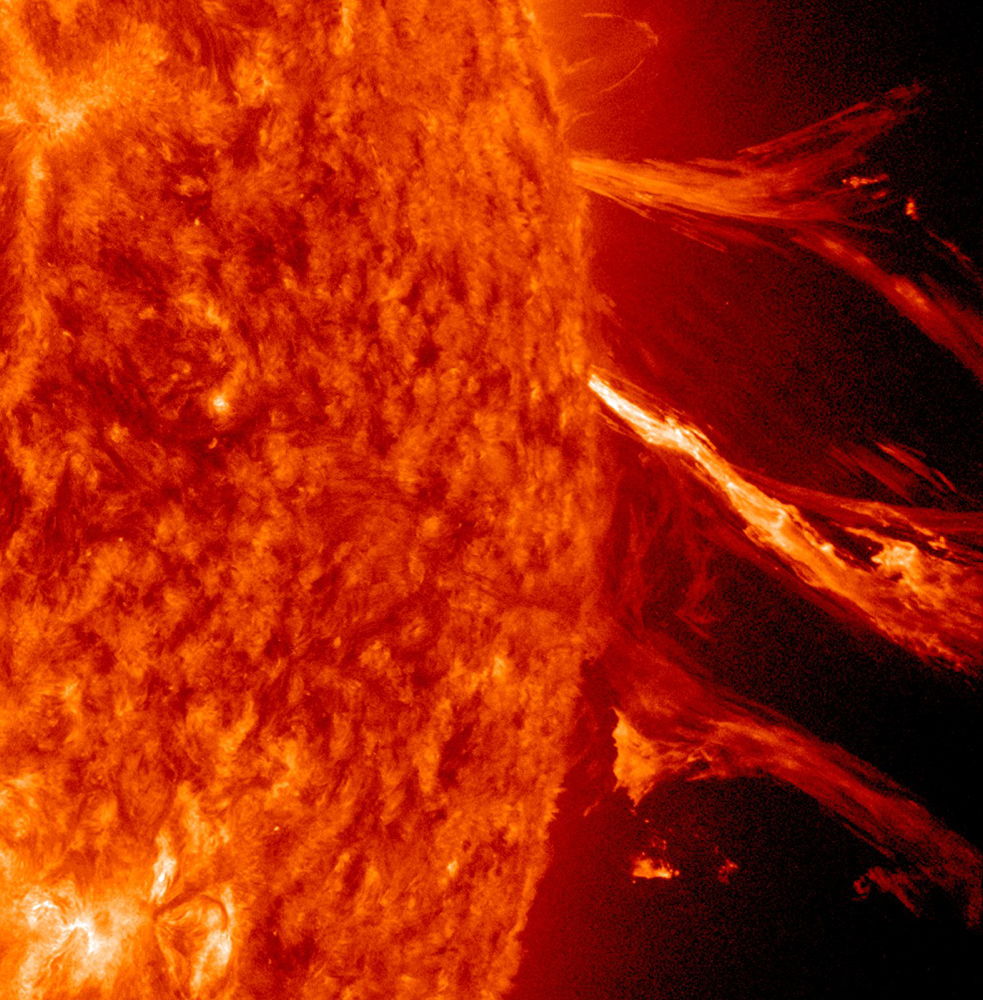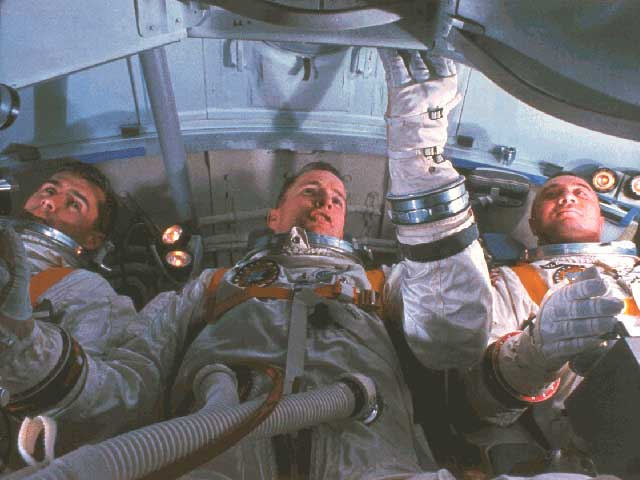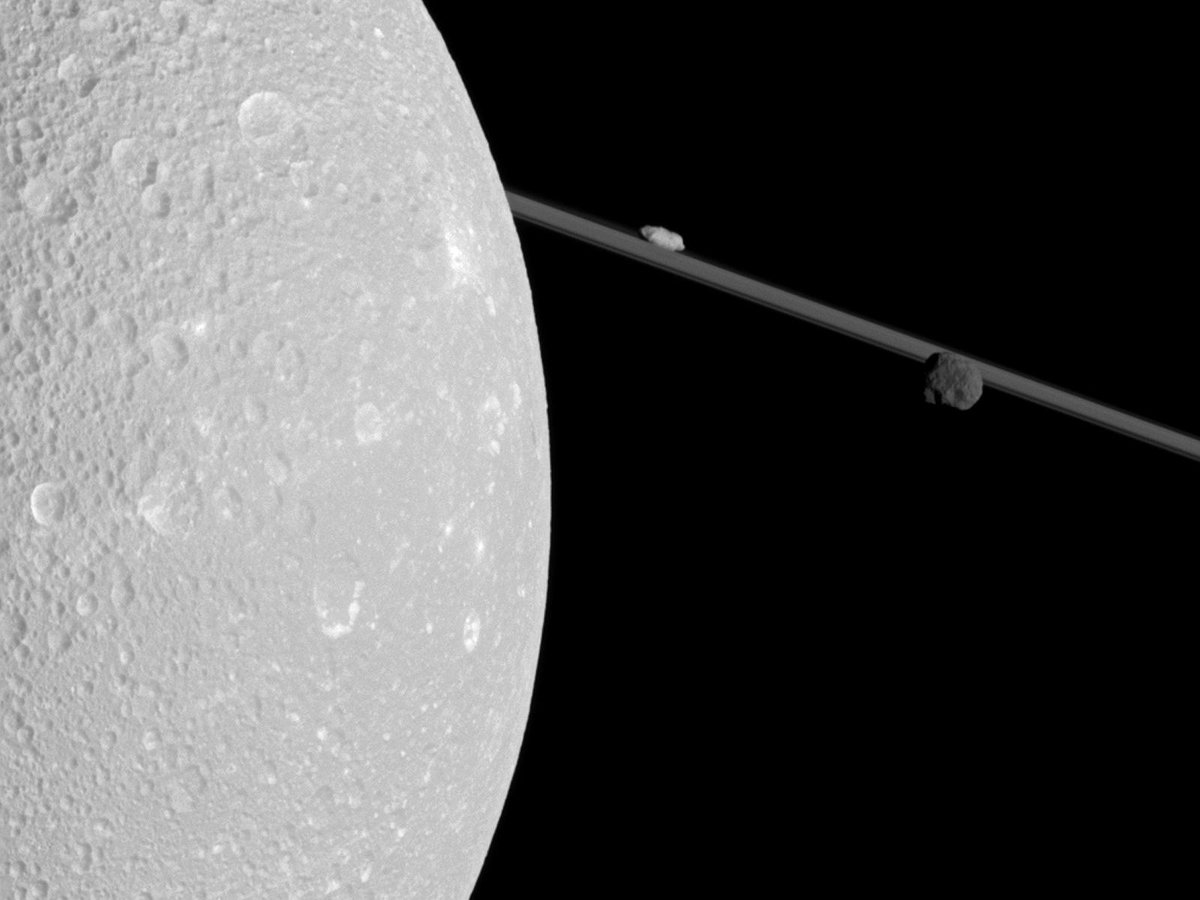Image of the Day: January 2012
Bluish
Tuesday, January 17, 2012: NGC 3259 is a bright barred spiral galaxy located approximately 110 million light-years from Earth. Its central bulge contains a supermassive black hole which emits intense radiation across the whole electromagnetic spectrum, including visible light, producing the bright central core. The spiral arms of the galaxy contain dark lanes of dust and gas, which spawn stars. Bright, young, hot stars appear in clusters in the galaxy's arms, giving the galaxy its bluish hue.
— Tom Chao
How Far?
Wednesday, January 18, 2012: A multitude of faint galaxies was captured by the MPG/ESO 2.2-meter telescope at the La Silla Observatory in Chile. The picture is part of the COMBO-17 survey (Classifying Objects by Medium-Band Observations in 17 Filters), which records detailed images of small patches of the sky through 17 different-colored filters. The area of this image is only about the size of the full moon, but contains thousands of identifiable galaxies. COMBO-17's extremely precise distance measurements permit astronomers to determine if two visually close galaxies lie at different distances from Earth. Closer galaxies act as gravitational lenses, providing very useful information for understanding how dark matter is distributed in the objects that act as lenses.
— Tom Chao
Behind the Sun
Thursday, January 19, 2012: On Jan. 2, 2012, the sun blasted forth a solar flare and coronal mass ejection from its far side. However, SDO spacecraft was able to photograph the strands of rising particle clouds in extreme ultraviolet light. Portions of the strands were unable to break free of the sun’s magnetic fields, and fell back to the sun, as seen here. The blast did not point at Earth.
— Tom Chao
Everybody Get in Line
Friday, January 20, 2012: An auspicious gathering occurred as all 15 space shuttle main engines arrived in the Engine Shop at NASA's Kennedy Space Center in Florida at the same time. Seen here, all six Pratt Whitney Rocketdyne space shuttle main engines from Endeavour's STS-134 and Atlantis' STS-135 missions sit in test cells. They are undergoing preparation for shipment to NASA's Stennis Space Center in Mississippi, where they will be repurposed for NASA next heavy-lift rocket, the Space Launch System.
— Tom Chao
Twin Galaxies
Monday, January 23, 2012: M60 is a large elliptical galaxy in the Virgo cluster. NGC 4647 is M60’s companion spiral galaxy which lies visually close to M60.
— Tom Chao
Down in the Depths
Tuesday, January 24, 2012: NASA’s Dawn spacecraft obtained this image of Caparronia crater on asteroid Vesta on Oct. 23, 2011. The left image shows the brightness and darkness of the surface. The right image uses the same brightness image as a starting point, but adds a color-coded height representation of the topography. The various colors correspond to the height of the area.
— Tom Chao
Lights in the Sky
Wednesday, January 25, 2012: The aurora borealis glistens above Yellowknife, NWT, Canada, seen by AuroraMAX at 19:41 MST on January 22, 2012. AuroraMAX features a live broadcast of the Northern Lights from Yellowknife, Northwest Territories. The project hopes to raise awareness of the science of the Northern Lights, and how the sun’s relationship with the Earth can affect our daily lives. AuroraMAX will allow skywatchers to follow the intensity and frequency of the aurora borealis leading up to solar maximum (hence the name AuroraMAX). Solar maximum, the most active period of the Sun’s 11-year cycle (producing the most active auroras), will peak in 2013.
— Tom Chao
Breaking space news, the latest updates on rocket launches, skywatching events and more!
Some Rovers Are Bigger than Others
Thursday, January 26, 2012: Three generations of Mars rovers developed at NASA's Jet Propulsion Laboratory, Pasadena, Calif., gather in JPL's Mars Yard testing area, clearly showing their relative sizes. At front left stands the flight spare for the first Mars rover, Sojourner, which landed on Mars in 1997. On the left stands a Mars Exploration Rover Project test rover representing a working sibling of Spirit and Opportunity, which landed on Mars in 2004. On the right, towering over the others, stands a Mars Science Laboratory test rover which matches the size of Curiosity rover, presently on course for landing on Mars in August 2012.
— Tom Chao
Remembering Apollo 1
Friday, January 27, 2012: Today marks the 45th anniversary of the tragic fire that killed the 3 crew members of Apollo 1. Apollo 1's crew, consisting of Virgil I. "Gus" Grissom, Edward H. White II and Roger B. Chaffee, died when a fire broke out in their capsule during a “plugs-out” test. The mission, originally known as AS-204, was redesignated Apollo I in honor of the crew. This photo shows the astronauts in training: (L to R) Roger Chaffee, Ed White and Gus Grissom.
— Tom Chao
Getting Closer
Monday, January 30, 2012: Cassini Spacecraft’s closest flyby of Saturn’s moon Dione came on on Dec. 12, 2011. Dione, closest to Cassini here, fills the left of the image. Two of Saturn’s other moons also appear in this image. Prometheus sits above the rings near the center top of the image. Epimetheus floats on the right. As this flyby focused on other Cassini instruments, it did not yield Cassini's best images of the moon. Earlier flybys yielded higher resolution images.
— Tom Chao

Space.com is the premier source of space exploration, innovation and astronomy news, chronicling (and celebrating) humanity's ongoing expansion across the final frontier. Originally founded in 1999, Space.com is, and always has been, the passion of writers and editors who are space fans and also trained journalists. Our current news team consists of Editor-in-Chief Tariq Malik; Editor Hanneke Weitering, Senior Space Writer Mike Wall; Senior Writer Meghan Bartels; Senior Writer Chelsea Gohd, Senior Writer Tereza Pultarova and Staff Writer Alexander Cox, focusing on e-commerce. Senior Producer Steve Spaleta oversees our space videos, with Diana Whitcroft as our Social Media Editor.
